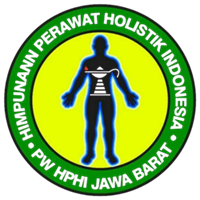Correlation Of Birth Weight With Stunting In Babies Aged 6-24 Months
DOI:
https://doi.org/10.52221/jvnus.v2i1.153Keywords:
Stunting, nutrition, LBW, childrenAbstract
Background: Stunting is one indicator of chronic nutritional status that describes stunted growth due to long-term malnutrition. One of the causes of stunting in children is family and household factors, namely maternal factors and the home environment. Objective: The purpose of this study was to determine the relationship between birth weight and the incidence of stunting in infants aged 6-24 months Method: This research was conducted in an analytical descriptive manner, namely research that tried to explore how the health phenomenon occurred. The population in this study was a number of infants aged 6-24 months, namely 48 infants. Considering that at the time of the study, there were 15 infants who were unreachable and, not in place at the time of the study, while the researcher's time was very limited, so in this study the researcher used a sample of 33 6-24 month old baby. Result: from the analysis test results with Fisher's exact test, a significance value of 0.023 and an odds ratio of 18.75 was obtained. Conclusion: The conclusion of this study is that from 33 infants aged 6-24 months, there are 7 babies who are LBW and 4 babies who are stunted. There is no relationship between birth weight and the incidence of stunting in infants aged 6-24 months where LBW babies are 18 times more likely to experience stunting than babies born with normal birth weight.
Downloads
References
Atikah Rahayu, Fahrul Yulidasari, Andini Octaviana Putri, F. R. (2015). Riwayat Berat Badan Lahir dengan Kejadian Stunting pada Anak Usia Bawah Dua Tahun Birth Weight Records with Stunting Incidence among Children under Two. Riwayat Berat Badan Lahir Dengan Kejadian Stunting Pada Anak Usia Bawah Dua Tahun, 67–73. http://dx.doi.org/10.21109/kesmas.v10i2.882
Firmansyah, A. (2017). THE RELATIONSHIP OF NURSE KNOWLEDGE ABOUT THERAPEUTIC COMMUNICATION WITH IMPLEMENTATION OF THERAPEUTIC COMMUNICATION IN CHILDREN AGE OF PRASEKOLAH (6 YEARS) IN THE CARE ROOM 1 POLEWALI MANDAR RSUD. Bina Generasi: Jurnal Kesehatan, 9(2), 10-22.
Firmansyah, A. (2018). Orientation Relationship With Anxiety Level In The Treatment Of Patients Floor Orchid Ii Hospital Polewali. Bina Generasi: Jurnal Kesehatan, 7(1), 35-42.
Fitri, L. (2018). Hubungan Bblr Dan Asi Ekslusif Dengan Kejadian Stunting Di Puskesmas Lima Puluh Pekanbaru. Jurnal Endurance, 3(1), 131. https://doi.org/10.22216/jen.v3i1.1767
Himawati, E. H., & Fitria, L. (2020). Hubungan Infeksi Saluran Pernapasan Atas dengan Kejadian Stunting pada Anak Usia di Bawah 5 Tahun di Sampang. Jurnal Kesehatan Masyarakat Indonesia, 15(1), 1. https://doi.org/10.26714/jkmi.15.1.2020.1-5
Lusita, A. P., Suyatno, & Rahfiludin, M. Z. (2017). Perbedaan karakteristik balita stunting di pedesaan dan perkotaan tahun 2017. Jkm, 5(4), 600–612.
Nasution, D., Nurdiati, D. S., & Huriyati, E. (2014). Berat badan lahir rendah (BBLR) dengan kejadian stunting pada anak usia 6-24 bulan. Jurnal Gizi Klinik Indonesia, 11(1), 31. https://doi.org/10.22146/ijcn.18881
Rahmadi, A. (2016). Hubungan berat badan dan panjang badan lahir dengan kejadian stunting anak 12-59 bulan di Provinsi Lampung. Jurnal Keperawatan, 12(2), 209–218.
Setiawan, E., Machmud, R., & Masrul, M. (2018). Faktor-Faktor yang Berhubungan dengan Kejadian Stunting pada Anak Usia 24-59 Bulan di Wilayah Kerja Puskesmas Andalas Kecamatan Padang Timur Kota Padang Tahun 2018. Jurnal Kesehatan Andalas, 7(2), 275. https://doi.org/10.25077/jka.v7i2.813
Sutio, D. (2017). Analisis Faktor-Faktor Risiko terhadap Kejadian Stunting pada Balita. Jurnal Departemen Gizi Fakultas Kesehatan Masarakat, Vol. 28 No, 247–256.
Sutrio, S., & Lupiana, M. (2019). Berat Badan dan Panjang Badan Lahir Meningkatkan Kejadian Stunting. Jurnal Kesehatan Metro Sai Wawai, 12(1), 21. https://doi.org/10.26630/jkm.v12i1.1734
Winowatan, G., Malonda, N. S. H., & Punuh, M. I. (2017). Hubungan Antara BB Lahir Anak dengan Kejadian Stunting pada Anak Batita diwilayah Kerja Puskesmas Sonder Kab Minahasa. Jurnal Kesma, 6(3), 1–8.
Zamrodah, Y. (2016). Faktor-Faktor Yang Mempengaruhi Kejadian Stunting Pada Anak Balita Di Wilayah Pedesaan Dan Perkotaan Di Kabupaten Jember. 15(2), 1–23.
Downloads
Published
How to Cite
Issue
Section
License
Copyright (c) 2020 JURNAL VNUS (Vocational Nursing Sciences)

This work is licensed under a Creative Commons Attribution 4.0 International License.















